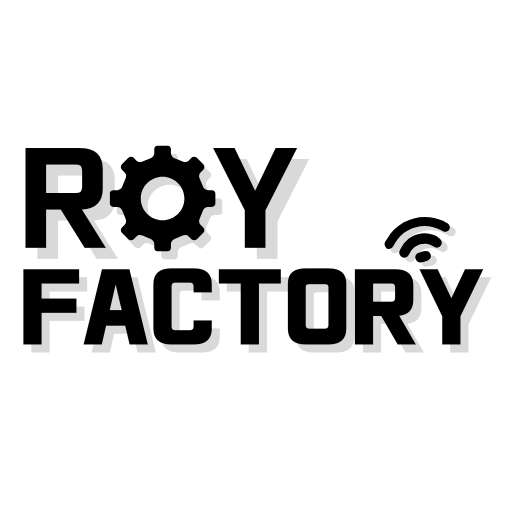Mastering CartPole with DQN: Deep Reinforcement Learning for Beginners
Mastering CartPole with DQN: Deep Reinforcement Learning for Beginners
If you’ve played with reinforcement learning (RL) before, you’ve probably seen the classic CartPole balancing problem. And if you’ve tried solving it with traditional Q-learning, you might have run into some limitations.
That’s where DQN — Deep Q-Network — comes in.
In this guide, we’ll explain what DQN is, why it was a breakthrough in RL, and how to implement it step-by-step to solve the CartPole-v1 environment using OpenAI Gym and PyTorch. Whether you’re new to RL or ready to level up from Q-tables, this tutorial is for you.
1. What is DQN?
Q-Learning works well for problems with small, discrete state spaces. But in the real world — or even a simple simulation like CartPole — the state is continuous, and creating a Q-table for every possible state is infeasible.
DQN solves this by using a neural network to approximate the Q-function. Instead of a table, the network learns to predict the expected reward for each action, given a state.
DQN = Q-Learning + Deep Learning
| Component | Purpose |
|---|---|
| Neural Network | Predict Q-values for each action |
| Replay Buffer | Store past experiences |
| Target Network | Improve stability |
| ε-greedy Policy | Balance exploration vs. exploitation |
This combination enables DQN to scale to more complex environments — including Atari games, robotics, and beyond.
2. Recap: The CartPole Problem
In CartPole, your agent controls a cart with a pole attached to it. The goal? Keep the pole from falling over by moving the cart left or right.
Environment Details:
- State Space: 4 floating point values (position, velocity, pole angle, angular velocity)
- Action Space: 0 (left), 1 (right)
- Reward: +1 for every time step the pole remains upright
- Done: When the pole falls beyond a threshold angle, or the cart moves too far from center
It’s a great starting point for reinforcement learning.
3. Why Q-Learning Isn’t Enough
Traditional Q-Learning relies on a Q-table that maps state-action pairs to expected rewards. That works for games like FrozenLake or GridWorld, but fails when:
- States are continuous
- The environment has high dimensionality
- We want to generalize across unseen states
DQN overcomes these by using a function approximator — a neural net — to estimate Q-values, enabling RL to move beyond toy problems.
4. DQN Components Explained
Let’s break down what you’ll need to build a working DQN agent.
1. Neural Network
The core of DQN is a network that takes in a state and outputs Q-values for all possible actions.
import torch
import torch.nn as nn
import torch.nn.functional as F
class DQN(nn.Module):
def __init__(self, state_dim, action_dim):
super().__init__()
self.fc1 = nn.Linear(state_dim, 128)
self.fc2 = nn.Linear(128, 128)
self.out = nn.Linear(128, action_dim)
def forward(self, x):
x = F.relu(self.fc1(x))
x = F.relu(self.fc2(x))
return self.out(x)
2. Experience Replay Buffer
Stores past experiences and samples them randomly to break temporal correlation.
from collections import deque
import random
class ReplayBuffer:
def __init__(self, capacity):
self.buffer = deque(maxlen=capacity)
def push(self, transition):
self.buffer.append(transition)
def sample(self, batch_size):
return random.sample(self.buffer, batch_size)
def __len__(self):
return len(self.buffer)
3. Epsilon-Greedy Action Selection
The agent explores randomly at first, then gradually exploits what it has learned.
def select_action(state, epsilon, policy_net):
if random.random() < epsilon:
return random.randint(0, 1)
with torch.no_grad():
return policy_net(state).argmax().item()
5. Training DQN on CartPole
Step-by-Step Loop:
import gym
import numpy as np
import torch.optim as optim
env = gym.make("CartPole-v1")
state_dim = env.observation_space.shape[0]
action_dim = env.action_space.n
policy_net = DQN(state_dim, action_dim)
target_net = DQN(state_dim, action_dim)
target_net.load_state_dict(policy_net.state_dict())
optimizer = optim.Adam(policy_net.parameters(), lr=1e-3)
replay_buffer = ReplayBuffer(10000)
batch_size = 64
gamma = 0.99
epsilon = 1.0
for episode in range(300):
state = torch.FloatTensor(env.reset())
total_reward = 0
for t in range(500):
action = select_action(state, epsilon, policy_net)
next_state, reward, done, _ = env.step(action)
next_state = torch.FloatTensor(next_state)
replay_buffer.push((state, action, reward, next_state, done))
state = next_state
total_reward += reward
if len(replay_buffer) >= batch_size:
transitions = replay_buffer.sample(batch_size)
s, a, r, ns, d = zip(*transitions)
s = torch.stack(s)
a = torch.LongTensor(a).unsqueeze(1)
r = torch.FloatTensor(r).unsqueeze(1)
ns = torch.stack(ns)
d = torch.FloatTensor(d).unsqueeze(1)
q_values = policy_net(s).gather(1, a)
next_q = target_net(ns).max(1)[0].unsqueeze(1).detach()
target = r + gamma * next_q * (1 - d)
loss = F.mse_loss(q_values, target)
optimizer.zero_grad()
loss.backward()
optimizer.step()
if done:
break
epsilon = max(0.01, epsilon * 0.995)
if episode % 10 == 0:
target_net.load_state_dict(policy_net.state_dict())
print(f"Episode {episode}, Total Reward: {total_reward}")
6. Observations and Performance
As training progresses:
- The total reward per episode increases
- The agent starts keeping the pole upright for longer durations
- Eventually, it consistently reaches the max score of 200
This is a solid indicator that the DQN is learning to solve the task effectively.
7. DQN Limitations and Next Steps
While DQN is powerful, it’s not perfect:
- It can be unstable or divergent without tricks
- It struggles with continuous action spaces
- It treats all experiences equally in the replay buffer
Enhancements (aka “Better DQN”):
- Double DQN: Reduces overestimation bias
- Dueling DQN: Separates state value and action advantage
- Prioritized Experience Replay: Focus on important transitions
- Rainbow DQN: Combines all of the above
We’ll explore these in future posts.
8. Conclusion
You’ve just implemented your first Deep Q-Network from scratch and trained it to solve CartPole. This is a big step toward mastering reinforcement learning with deep learning.
By understanding both the code and the concepts, you’re ready to explore more complex environments and powerful variants of DQN.
